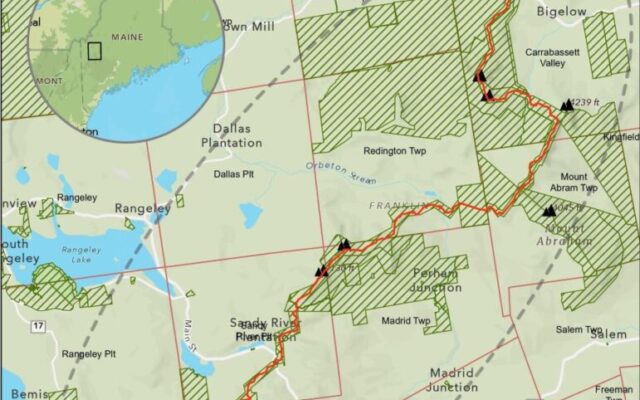
Balance outdoor conservation and outdoor recreation in the High Peaks
By Christopher Borgatti
I recently came across an op-ed penned by V. Paul Reynolds, a writer and personality in the Maine fishing and hunting space that I’ve long respected. The topic was regarding the idea of a National Wildlife Refuge in the High Peaks Region of Maine. This past spring, the U.S. Fish and Wildlife Service had announced that it was considering the concept and would be seeking public input, as it explored the idea.
Summarizing Mr. Reynolds take on the subject — we don’t need the “feds” help in conserving land for recreation or wildlife in Maine. He doubled down on his radio show recently while discussing the refuge concept, “I don’t trust the feds, I have never trusted the feds.” I don’t entirely share that opinion, or at least, I’m not willing to dismiss the idea before the process has even begun in earnest, or without a tangible proposal in hand. Moreover, I believe that Mr. Reynolds, fails to recognize that Maine, and those of us who fish, hunt, and treasure Maine’s wild places might actually benefit from the “feds” bolstering successful land conservation efforts already underway in Maine.

Mr. Reynolds, along with organizations such as the Sportsman’s Alliance of Maine and the Maine Professional Guides Association, contends that we can depend on programs like the Land For Maine’s Trust Fund for land preservation. Their argument revolves around the belief that the federal government cannot be trusted, and thus, we should rely on Augusta, to safeguard our land and the heritage of fishing and hunting. While the LMF program is indeed effective, when adequately funded, it has its limitations. Notably, LMF awards up to 50 percent of the appraised value, and applicants must secure matching funds equal to or greater than the award amount. Additionally, it operates through a competitive process, attracting deserving applications from across the state. LMF is not exclusively designed to safeguard access to undeveloped, remote parcels with ecological and recreational value; it also encompasses other objectives such as acquiring agricultural lands and commercial waterfront properties. In fact, a recent state conservation panel has recommended expanding LMF’s scope to include “community projects” and allocating more funds to areas where people reside, reflecting Maine’s changing values.
Maine is changing. From the culture and values to the people who call it home (or a second or third home). Take the High Peaks region for instance. With 10 of Maine’s 14 4,000-foot peaks as a backdrop, it encompasses nearly 400,000 acres of outstanding fish and wildlife habitat and it represents one of the state’s largest roadless areas. Recreational opportunities abound, from hiking, biking, canoeing in the spring and summer to skiing and snowmobiling in the winter. Lying entirely within Franklin County, it hovers around the bottom third of the state for median household income ($53,607) and yet, the median sale price for residential real estate has broken $300,000 twice in the last two years. This disparity is well-documented, highlighting the challenge of soaring real estate prices outpacing the affordability of local residents.
Changing too is Maine’s tradition of open access to private land. As hunters and anglers in the Northeast, we know all too well that open access to private land is becoming increasingly tenuous. So many of us have stories of no longer being able to walk the woods we once did or finding “Posted” signs and gates where they never were before. A recent University of Maine study found that over half of Maine’s landowners are considering restricting public recreation on their land in the future or opting to lease recreational access to guides and hunt clubs. This isn’t just the result of new people moving to Maine, even Maine-based timber companies have begun to close public access. Over the next decade, we’ll see land continue to become posted at an ever-increasing rate as many of Maine’s landowners age, and their property begins to change hands to new owners.
This is not the time to let political sentiment dictate how we protect Maine’s wild places or our heritage as hunters and anglers. Instead, we must approach our responsibility as conservationists with a pragmatic perspective, considering the well-being of future generations. By leveraging all available resources and tools, we can maximize opportunities for outdoor recreation, resulting in the conservation of more land, the protection of more critical habitat, and less posted land. It is my sincere hope that stakeholders can continue the dialogue with the U.S. Fish & Wildlife Service, with the aim of aligning the values and traditions of Maine’s outdoor community with the vision for this refuge. There are examples we can point to where rural communities, sportsmen and sportswomen, and other outdoor recreationists have structured a conservation area refuge that has achieved a balance of habitat and wildlife conservation, along with outdoor recreation. Let’s at least see if it can be done in the High Peaks.
Borgatti is the northeast coordinator for Backcountry Hunters & Anglers. He has been visiting the High Peaks for over 30 years, typically with either a fly rod or a firearm.